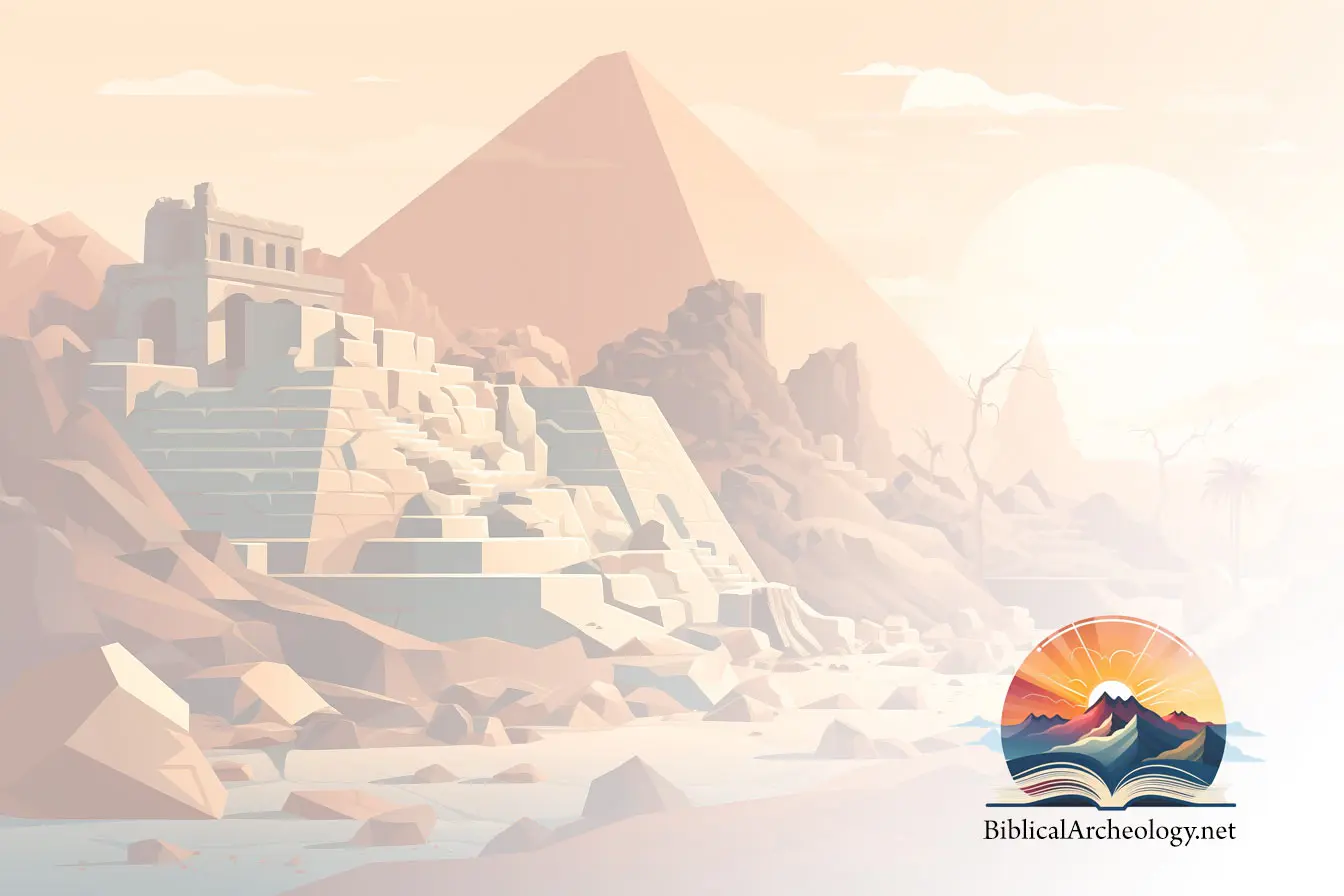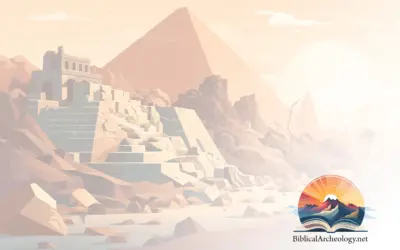These Articles Are Reproduced With Special Permission From Archeological Diggings Magazine
For More Information And A Subscription, Please Visit www.DiggingsOnline.Com
At the end of the 2001 Diggings tour 15 of the group of 26 chose to stay an extra week to work as volunteers on our excavations at Mareshah, 30km south west of Jerusalem. Mareshah was a very important city in Old Testament times. It was at the crossroads where travellers from Egypt could take the road to Hebron or Jerusalem, or continue on to Damascus or Anatolia (present day Turkey).
This city had three periods of occupation. The Old Testament city referred to in connection with the great battle fought between King Asa of Judah and a huge army from Egypt (2 Chronicles 14:9-12) was on top of the hill. This site was mostly abandoned during the Greek Period and the population lived and worked on the side of the hill. It was then known as Marissa.
In the Roman Period a large city called Eleutheropolis was built at the foot of the hill. This is where we have been excavating for the last three years, but this year the Israeli Antiquities authority invited our group to work at Marissa and we readily agreed to that.
On the east side of the hill is a cemetery which had been used during the Greek Period. Israeli archaeologist Bernie Alpert has been in charge of archaeology in this whole area for the last 16 years and he took us to a tomb that he had been excavating recently. The tomb had been built into the side of the hill and Bernie’s team had partially removed the earth from inside the tomb which had yielded a number of human bones. He suggested that we dig further to see if there was anything of significance lower down. David Coltheart and his volunteers went down a further half metre but found only a few insignificant pottery shards.
Bernie also pointed out that above this tomb there were three semi circles of uncut stones of various sizes which were protruding from the surface of the ground. There seemed to be no apparent explanation for these stones which had been deliberately placed there, and he asked us to excavate there to see if we could find any clues as to when they were placed there and why.
I was happy to work on this project and marked out an area of 5 x 5 metres and set the group to work clearing the surface and then removing the earth until we had exposed the base of the stones. By the time we had cleared the whole area to a depth of about half a metre it was apparent that the stones had simply been placed on the surface of the ground after the tomb had been built, and subsequent soil erosion further up the hill had washed more earth down to half bury the stones. There were no foundations beneath the stones we excavated around.
However, it was about at this stage that we had a surprise. I heard a cry of alarm behind me and turned to see that Val Reading’s leg had disappeared down a hole in the ground. After we rescued Val, she and Andrew Swanson enlarged the hole and I was able to squeeze through it to find myself in a tomb which had a gable roof consisting of six large slabs of stone. One of the centre slabs had fallen in and that is why the ground beneath Val had collapsed.
I caught my breath as I turned to look at what must have been the entrance to the tomb and noted that this doorway had not been disturbed. It was obvious that grave robbers had not entered the tomb. It was also clear that grave robbers had not entered the tomb through the collapsed roof. Had they done so, earth and debris would have been washed into the tomb and filled it up. As it was, on the tomb floor, there was only a thin layer of soil which had filtered down through the small gaps between the roof slabs.
Next day Bernie came to see how we were progressing and he was ecstatic at our find. From the style of the pottery in the tomb he was able to determine that the tomb was about 2,400 years old, probably from the very late Persian period, and he told us that our find therefore was unique and of utmost importance to the history of the area.
Andrew removed the dirt that had fallen into the hole and then he and Val started to carefully scrape and brush away the earth from the tomb floor. It is an unwritten law that whoever finds something of importance has the privilege of working on it. Val and Andrew were only too glad to do the work in the tomb and they did a fine job. In life at home in Western Australia Andrew has a plumbing business so he was no stranger to manual work.
The first object they uncovered was the slab of stone that had collapsed into the tomb. I would have preferred to lift this stone out and keep it for observation but the area in the tomb was confined and the stone very heavy so it was impossible for two people to lift it out. Andrew had to use a sledge hammer to smash it and then remove the pieces.
Further careful scarping revealed the outline of a skeleton along the north side of the tomb. I guessed that the skeleton belonged to an adult female and later discoveries supported this conclusion. Further along towards the rear of the tomb Andrew uncovered a skull. The Antiquities Department had not provided us with any small brushes but one of our volunteers kindly loaned us her manicure brush which was just ideal for this delicate work.
To me the things we find are not just objects. They represent people, the people who made them, the people who used them and the people who broke them and threw them away. In this case it was the people themselves and I thought it appropriate to give the skeleton a name. Val did not seem the right name for a 2,400 year old skeleton so I asked Val what her middle name was. Josephine. Perfect! Just the name to fit the lady who had lived and died here and had been lovingly buried in this family tomb.
Further digging at the rear of the tomb revealed a jumble of bones including three more skulls, one of which was that of a child., As the ladies doing the sifting had discovered some small teeth that I concluded were a child’s first teeth, I could say that this child could not have been more than about seven years of age when it died.
The jumble of assorted bones came from rather a strange custom from those times. Bodies were laid to rest with great care and respect, (although we noted that Josephine’s spine was rather curved, suggesting that the people burying her had not taken care to leave her in a very straight position). But by the time a later burial was made the flesh had disintegrated and they would then unceremoniously push the earlier bones to the rear of the tomb to make way for the latest burial.
At Josephine’s side they found some finger bones on which were two very fine bronze rings, confirming that the skeleton was that of a female. There was also a small shiny dark brown semi-precious stone which was probably an inlay on one of the rings.
Another trinket which was of great interest to us was a very thin bronze coin with an engraving on it and a small hole near the rim. After being buried for 2,400 years the coin was not in good condition and we could not distinguish the writing or engraving on it, but it will go to the experts in Jerusalem for inspection. It may well reveal the name of the head on the coin and thus the precise date of its production. We await the report with interest.
As well as the date of the coin, also interesting was its relation to a parable which Jesus Christ told, as recorded in Luke 15:8-10. “What woman, having ten silver coins, if she loses one coin, does not light a lamp, sweep the house and seek diligently until she finds it? And when she has found it, she calls her friends and neighbours together saying, rejoice with me, for I have found the piece which I lost!”
The cause of the woman’s anxiety and subsequent rejoicing was not just the monetary value of the coin. It was customary in those days for young women to be given a necklace of coins as a marriage dowry. It had strong sentimental value and for the woman to lose one of these coins was a stark tragedy. The coin must be found at all costs. The coin we found was undoubtedly one of Josephine’s marriage gifts and therefore very precious.
In the parable Jesus spoke of “ten silver coins.” The Greek word used here for silver coins was the Greek word “drachma.” Drachmas were the Greek coins used at the time of Josephine’s burial. In fact drachmas are still the currency used in Greece today. This was very relevant for us finding a tomb from the late Persian/early Greek period.
The moral Jesus drew from the parable was, “Likewise I say to you, there is joy in the presence of the angels of God over one sinner who repents.” This was one of three parables Jesus told as recorded in Luke 15. There were also the well-known parables of the prodigal son and the lost sheep. The sheep had no intention of getting lost. It just wandered away from the flock and no doubt panicked when it discovered it was lost in the wilderness. It knew it was lost and was relieved when the shepherd found it.
The prodigal son made a deliberate choice to be lost. He was enjoying the good life until a famine arose in the land and his funds ran out. That is when he came to himself and decided to return to his father.
The lost coin had no choice in the matter and it did not know it was lost. According to theological interpretation these three “losts” represent the three classes of people who need to be found, and the recovery of each is received with great rejoicing in heaven.
Anyway there was plenty of rejoicing among our group who were very excited at the discovery. The Sunday we worked on the tomb was Mother’s Day and next day I was talking to Val after the day’s work was done. She drew a deep breath and said softly and rather emotionally, “That was the most wonderful Mother’s Day I have ever experienced.”
The timing of our dig could not have been better. We were able to just complete our work on the tomb the day before we all flew to Istanbul. We put Josephine’s bones in one box and the rest of the bones in another box and sent them up to the experts of the Israeli Antiquities Authority in Jerusalem. They will analyse them to determine such matters as sex, age at death, possible cause of death, and other information of value to archaeologists.
October-November 2001


